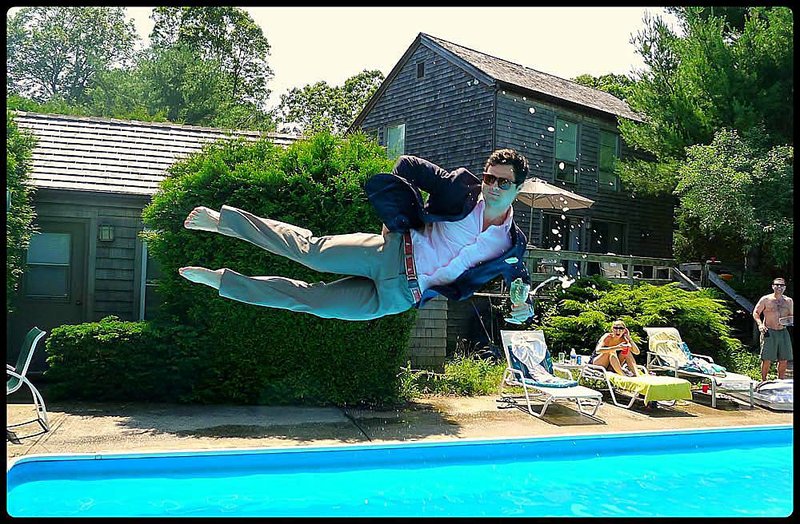LITTLE ROCK — The photographs are perplexing, a visual magic trick. People are passing the time, reading the paper, pouring wine, sipping coffee. They just happen to be reclining in space over a body of water.
This is the leisure dive.
It’s the latest in a series of photography pranks that have sprung up on social-media sites. First came planking, a term an Australian claims to have coined in 2008 to describe his friends’ habit of lying down on dance floors straight like a plank. It exploded in popularity this summer, with everyone from Hugh Hefner to Richard Simmons trying it out. Then there’s owling, in which you perch like a bird; and batting, in which you hang upside down like, yes, a bat. Then came the leisure dive.
All of the acts are caught on camera and passed around on the ever-growing number of photosharing sites. It is an online joke taken offline and brought back to the Internet in one sprawling, global comedic moment.
Which has many people asking why. “I don’t understand the allure of owling,” Jenny Lawson, the comedic blogger, wrote. “We’re doing deep knee bends in the name of whimsy?”
In the name of whimsy, yes, but the trend reveals something about our shifting relationship to photographs.
For John Lewis, the leisure dive is a step beyond the other -ing games. It requires costume planning and a photographer skilled enough to capture the moment between the leap and the splash.
He could be accused of bias, of course, as he did invent the dive with his old college classmate Alex Scott. The friends started the LeisureDive.com site July 1 to post user-submitted photos of people mid-dive. Within the month, a million people had visited.
This latest photography prank is mesmerizing. You could call it the art of online: a collective riffing off one common theme, in more outlandish and creative ways. How many times can you leap out over a pool, strike the same pose, and interpret it in a new way?
Lewis and Scott came up with the game during a dive contest judged by friends on a lazy summer afternoon by the pool. Intimidated by Scott’s swan dives, Lewis chose to underwhelm the poolside panel with a different approach. He grabbed a Corona, jumped horizontally over the pool, crooked his elbow and looked as nonchalant as one can when flying out over the water.
Because everyone, everywhere has phones with cameras these days, Scott just happened to snap the leap, catching him midair. The leisure dive was born. Someone else had to try it. To improve on it, they opted for clothes instead of a bathing suit. Then came croquet mallets, newspapers and so forth.
The ubiquity of cameras has altered behavior. Lewis said people now choose the memories they want to make, rather than just let life happen.
The power of photography to affect our memories has long been a study of research. In 2007, a study found that doctoring photographs of past public events altered people’s memories of such famous moments such as the 1989 Tiananmen Square protest.
We remember what we see — not necessarily what happened. In that sense, we can create our past. Lewis thinks we’re already doing this on social media sites: constructing our online existences in the manner we see fit. His dives imitate that idea: “You’re posing glamorously and leisurely in a manufactured way,” although it’s obviously a false reality. The viewer knows gravity will prevail. The subject knows the thrill of the joke will fade.
But for a moment, everyone can pretend that life is a wondrous sort of place where sometimes you do just glide through the sky, without a care in the world.
Style, Pages 29 on 08/16/2011
